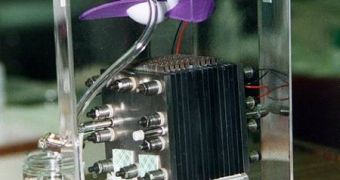Aluminum hydride has been touted as one of the most promising materials for carbon storage by experts involved in this line of research for a long time. Now, researchers at the United States Department of Energy's (DOE) Savannah River National Laboratory (SRNL) have engineered a reversible route to generate the material, which could bring about a new age of progress in a variety of fields, ranging from energy technology to synthetic chemistry, as well as a whole new class of storage materials.
“We believe our research has provided a feasible route to regenerate aluminum hydride, a high capacity hydrogen storage material,” the lead researcher of the project, SRNL expert Dr. Ragaiy Zidan, says. The main innovation that his team accomplished was that they created a closed-circuit aluminum hydride (AlH3 or alane) production process, which offers a cost-feasible alternative to existing methods. Additionally, the process allows for the repeated storage and discharge of hydrogen from the material, which means that future fuel cells made of the stuff would have the ability to withstand recharging.
This is the first time ever that a science team managed to electrochemically generate alane. Other attempts were made in the past at exactly this, but failed. Using an electrochemical process, hydride is synthesized directly, while the starting material is generated directly out of hydrogen. This circumvents a large number of steps that other processes had to employ in order to accomplish approximately the same thing, which made them more expensive and resource-consuming.
Storing hydrogen in solid forms, as in inside materials like aluminum hydride, has been a specification of the Department of Energy to all of its research institutions and laboratories involved in studies on this issue, because of the safety and practicality advantages that this storage method confers. In addition to meeting this standard, the materials the DOE is interested in should also exhibit certain thermodynamic and kinetic properties, which would make them able to release the hydrogen they store on command, and not a second later. Until now, several candidates have been found that only fulfill a few of the needed criteria, but a universal answer to this question has yet to be developed.
Alane was, until now, the top candidate, but its main problem was that it could not store hydrogen in the way envisioned by the DOE, because it generated table metal chloride byproducts, which could not regenerate the starter material. Additionally, the high pressures required to combine aluminum and hydrogen made the material too expensive. Now, with Zidan's innovation, those obstacles are behind, and work on making alane a feasible option can continue.

 14 DAY TRIAL //
14 DAY TRIAL //